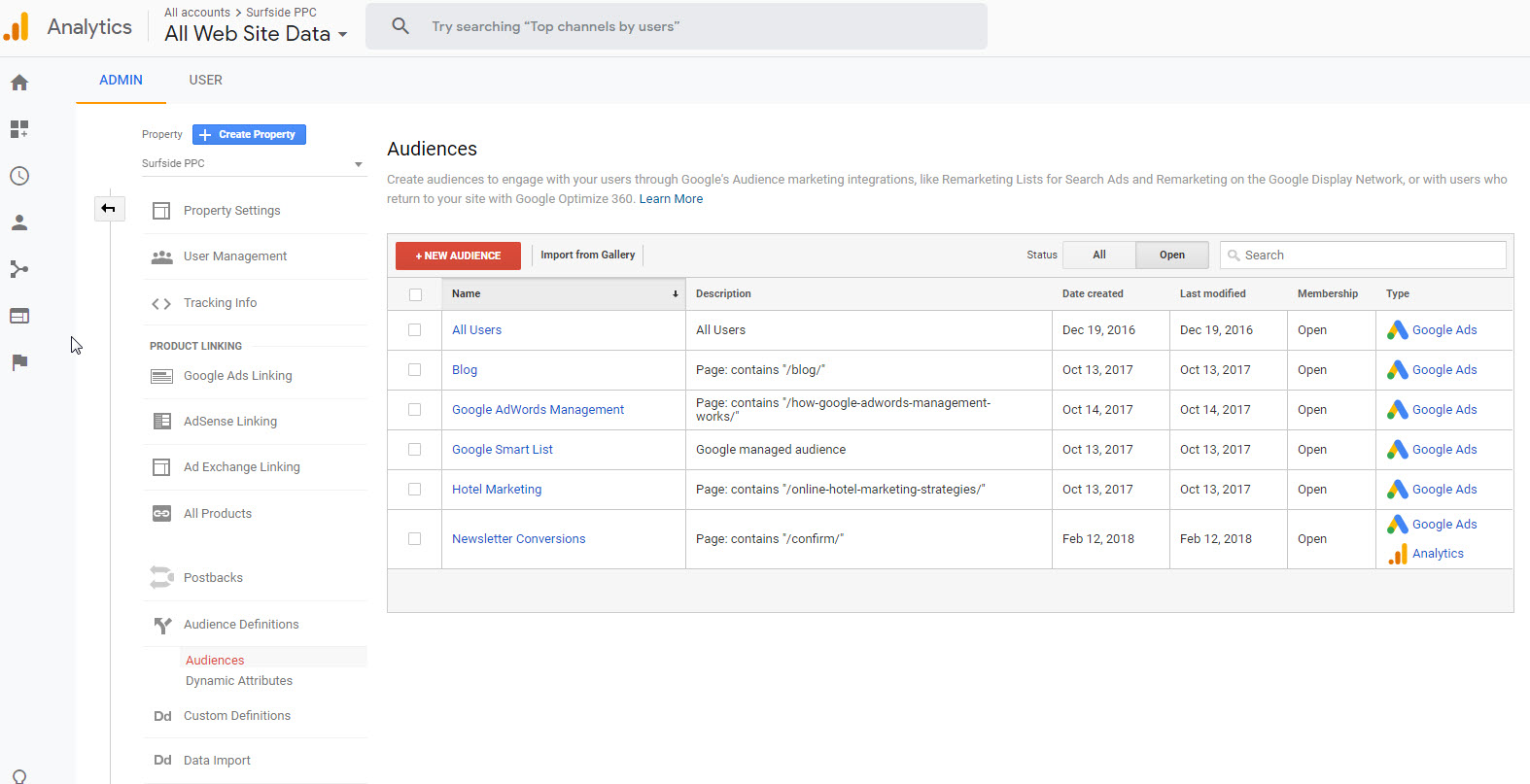Harnessing Remarketing in Google Analytics: A Comprehensive Guide
Utilizing remarketing in Google Analytics provides services a strategic side in reaching out to prospective customers. This overview will certainly shed light on the crucial actions involved in using the complete potential of remarketing in Google Analytics, leading to enhanced advertising end results.
Recognizing Remarketing in Google Analytics
Remarketing in Google Analytics allows companies to purposefully target customers that have previously engaged with their internet site or mobile application. By leveraging data from Google Analytics, organizations can create tailored remarketing checklists based upon individual behavior, such as web pages seen, activities taken, or specific goals attained. This powerful device enables organizations to re-engage with users who have actually revealed interest in their product and services, eventually raising the probability of conversion.
Comprehending the different sorts of remarketing methods is essential for a successful campaign - What Is “Remarketing” In Google Analytics?. Google Analytics offers different choices, including basic remarketing, vibrant remarketing, and remarketing lists for search advertisements (RLSA) Each type serves a distinct purpose and can be tailored to satisfy particular marketing purposes
In addition, assessing the efficiency of remarketing campaigns is crucial for enhancing outcomes. Google Analytics provides valuable insights into the efficiency of various remarketing methods, enabling companies to make data-driven decisions and improve their targeting method. By constantly changing and keeping track of remarketing efforts based upon analytics information, companies can make the most of ROI and drive success in their advertising and marketing campaigns.
Establishing Up Remarketing Campaigns

After establishing audience listings, the next step is to connect Google Analytics with Google Ads. By linking these 2 platforms, services can flawlessly move audience lists from Google Analytics to Google Advertisements for remarketing objectives. This integration enables more accurate targeting and far better campaign performance.
When the accounts are linked, services can produce remarketing campaigns in Google Advertisements making use of the audience details formerly specified in Google Analytics. These projects can be personalized with particular ad creatives, messaging, and bidding process techniques to effectively re-engage with past visitors and drive conversions. By complying with these actions, businesses can leverage the power of remarketing to improve their advertising efforts and raise ROI.
Making Use Of Target Market Division Methods

Predefined sections in Google Analytics permit you to promptly examine usual target market groups like brand-new users, returning users, or individuals that finished a details objective on your site. Personalized sectors, on the other hand, allow you to produce special sectors based upon certain criteria that are crucial to your company purposes. Dynamic remarketing lists instantly readjust based on user habits, revealing personalized ads to customers who have connected with your website in specific methods.
Studying Remarketing Efficiency Metrics
Upon evaluating the effectiveness of remarketing projects in Google Analytics, the analysis of crucial efficiency metrics gives useful understandings right into audience interaction and conversion prices. By delving right into metrics such as click-through prices (CTR), conversion prices, price per purchase (CPA), and return on ad spend (ROAS), marketers can evaluate the success of their remarketing initiatives. Examining these metrics allows online marketers to enhance projects, refine target market targeting, and allocate budget plans effectively click for more to boost total remarketing efficiency.
Enhancing Remarketing Strategies
When refining remarketing strategies in Google Analytics, concentrating on audience segmentation is vital for attaining project success. By dividing your audience into certain sections based upon their behavior, demographics, or interests, you can tailor your ads better per team. This targeted method enhances the probability of involving users who have already shown interest in your items or solutions, resulting in higher conversion prices.
An additional essential element of enhancing remarketing strategies is continuously testing and refining your projects (What Is “Remarketing” In Google Analytics?). A/B screening different ad creatives, messaging, or offers can help you identify what reverberates ideal with your target market and drives one of the most conversions. By assessing the efficiency of these examinations in Google Analytics, you can make data-driven decisions to pop over to this site optimize your remarketing initiatives additionally
In addition, leveraging vibrant remarketing can considerably enhance your project results. This attribute enables you to show personalized advertisements to users based on their previous communications with your web site, showcasing solutions or products they have formerly watched. By supplying customized material to users based upon their habits and rate of interests, dynamic remarketing can help raise interaction and drive conversions.
Conclusion
In conclusion, harnessing remarketing in Google Analytics is a critical approach to target individuals who have formerly involved with an internet site. By creating tailored audience listings and utilizing target market segmentation strategies, organizations can optimize remarketing projects for enhanced conversion prices. Evaluating efficiency metrics and constantly maximizing methods are important for making best use of the efficiency of remarketing initiatives.
Google Analytics provides numerous options, including typical remarketing, dynamic remarketing, and remarketing checklists for search ads (RLSA)After establishing up audience listings, the following step is to connect Google Analytics with Google Advertisements. By linking these two platforms, businesses can effortlessly here transfer target market checklists from Google Analytics to Google Ads for remarketing functions.As soon as the accounts are linked, services can create remarketing campaigns in Google Advertisements using the audience notes formerly specified in Google Analytics.When refining remarketing techniques in Google Analytics, concentrating on target market segmentation is extremely important for attaining campaign success.